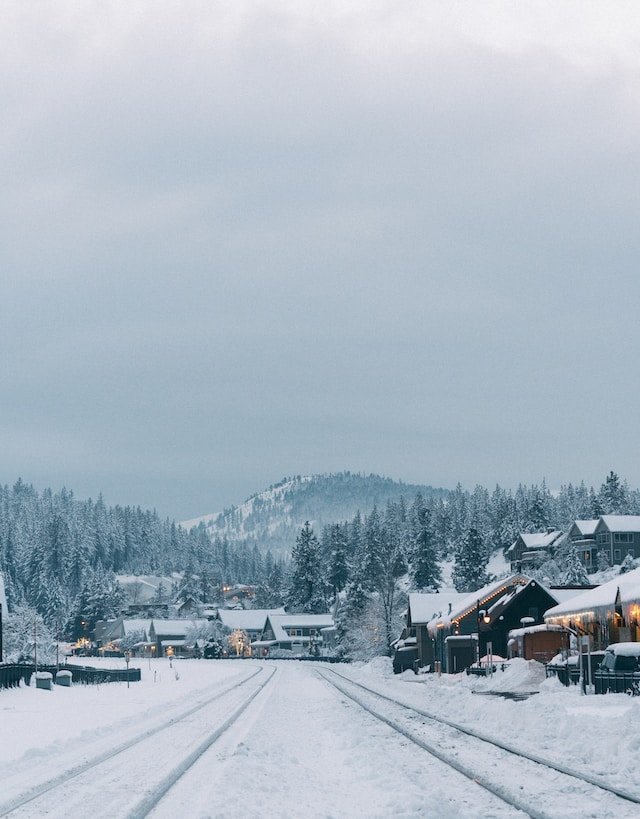Mountain Towns: A 2023 Short-Term Rental Analysis
Have You Noticed Changes In The STR Industry?
There’s no arguing that the short-term rental market can be a volatile one. If you were a vacation rental proprietor prior to the pandemic, you’re aware of just how unpredictable this industry can be and how vulnerable it is to changes in economic conditions.
However, one way to dispel worries about the future of the short-term rental market is to learn as much as you can about how it works, which is why we’re diving in deep to the market’s current state with a particular focus on mountain towns. We’ll go over the state of the market in 2023 so far, look into how mountain towns fared this year, and give you some insight with our predictions into the market for the 2023-2024 ski season.
Keep in mind that the data we’ll be going over in this blog is national, however, so if it does not reflect your current numbers or short-term rental outlook, that may be why.
An Overview of 2023’s STR Market So Far
In our last market blog, we took a look at how Q1 and Q2 of 2023 had fared for the vacation rental industry using data gathered from AirDNA. Today, we’ll be turning our attention towards how Q3 turned out as well as what the outlook is for the remainder of 2023’s Q4.
In July, much of the same pattern for the first half of the year continued, with KeyData reporting declines in occupancy rates and RevPAR for the industry as a whole. But while demand did not keep up with its rates in 2021 and 2022, the market still averaged 4.5% higher demand than in 2019’s pre-pandemic days. Plus, AirDNA reported that July of 2023 marked a new record for the most stays in a one-month period: 35.4 million nights.
For August, however, the industry began to cool down a bit yet again. RevPAR saw a 4% decline year-over-year, while occupancy rates dragged behind 2021 and 2022, falling 4.2% year-over-year according to AirDNA. There was some good news, however: average daily rates rose a small percentage and nights booked also rose 8.7% year-over-year.
September marked a better month for the short-term rental industry, with AirDNA reporting small gains in RevPAR, total nights booked, and average daily rates. Demand also grew by a staggering 12.2% year-over-year, helping to soften the blow of a moderate August.
So far in Q4, October proved to show the same results we’ve seen over the rest of the year, with KeyData reporting that average daily rates, RevPAR, and calendar occupancy fell below 2022 and 2021 levels. For the Rocky Mountain States and the Western US, RevPAR in particular decreased by 13% and 16% respectively, year-over-year. These results continue a trend from KeyData, which has consistently reported a decline in RevPAR in each month of the third quarter.
Mountain Towns: How Have They Fared in 2023?
Although there are still plenty of reasons to be optimistic about how 2023 will end for the short-term rental market, there’s no arguing that numbers overall have been down this year in comparison to 2022 and 2021. However, it’s hard to measure up to those two years, since the travel boom following the pandemic set a standard that is proving to be unrepeatable in the years following.
For mountain towns specifically, there have been a host of factors that have affected economic conditions. In the Front Range, for instance, drier and warmer weather in October has dimmed some interest in the oncoming ski season, as the massive snow totals seen last year may not be possible again for 2023-2024. According to a recent Summit Daily article, in Breckenridge booking windows have shortened and occupancy has dropped around 10% compared to last year. Short-term rental regulations have also had a significant impact on the vacation rental market in Breck as well.
Outlook for Mountain Town STR Markets for Ski Season 2023-2024
As long as the snow continues to fall, travelers will flock to destinations like Lake Tahoe, Park City, Breckenridge, and Telluride to enjoy a ski vacation.
Despite this happy outlook, it’s a good idea to moderate your expectations for the burgeoning ski season. One important thing to think about during economic shifts and downturns is how you can stand out from the competition in your area and drive guests towards your listing. Diving into research on how to brand your vacation rental or make it even more unique can help you stay ahead of the pack. There’s also other smart strategies, such as weathering the storm by allowing longer stays or leaning more on direct bookings, that can help you to still earn the profit that you need to keep your business afloat during hard times.
To Weather Any Kind of Storm in the Short-Term Rental Market, Turn to LocalVR
Note: AirDNA and KeyData’s findings are from studies regarding the entire short term rental industry. Individual market’s performance and outlook may vary, especially in the mountain towns that we specialize in. If you would like to know about your specific market please reach out to our team so that we can help answer any questions.
2023 has not been a banner year for the short-term rental market, which has been helpful for moderating expectations that were formed during the post-pandemic travel boom. Mountain towns in particular have seen a bit of a downswing, but there’s still plenty of reasons to be optimistic about the future of the short-term rental industry overall.
Looking to learn more about the ups and downs of the short-term rental industry? Check out our market blog from last year or take a look at our data-driven guide to STR distribution platforms.




